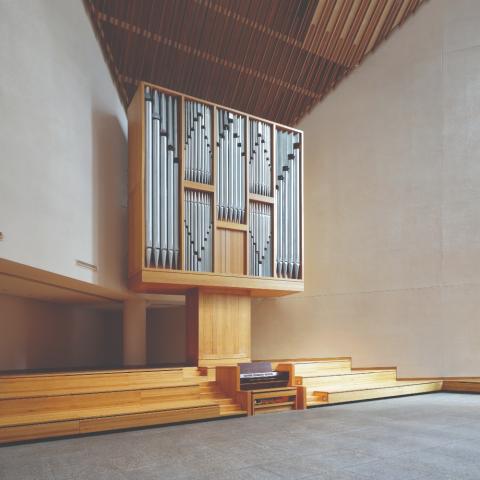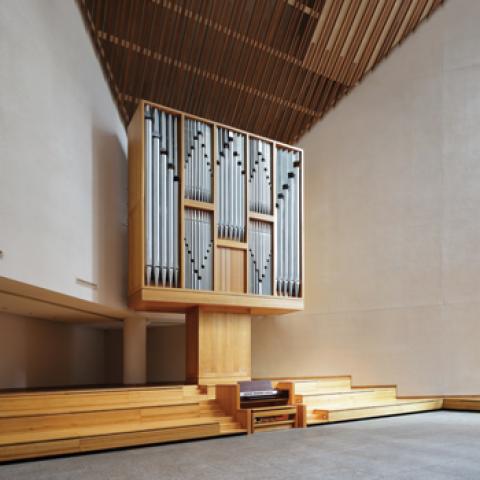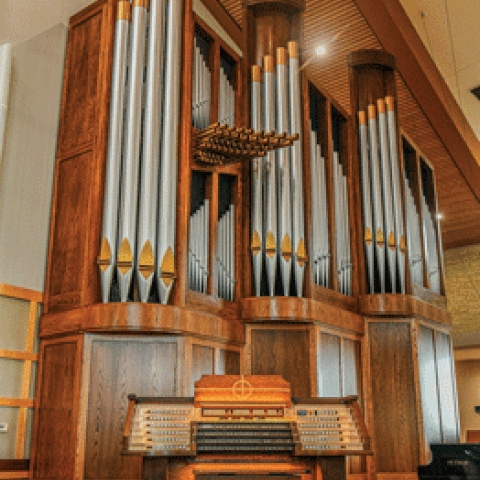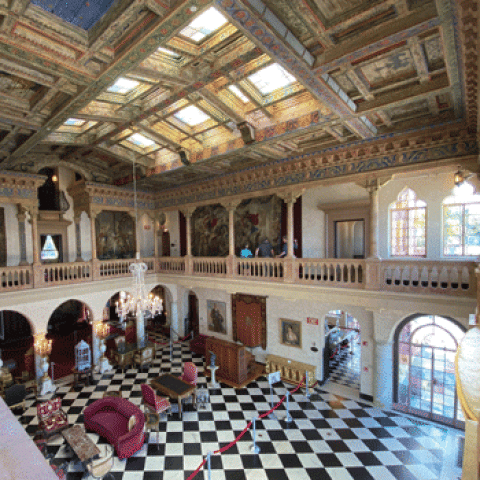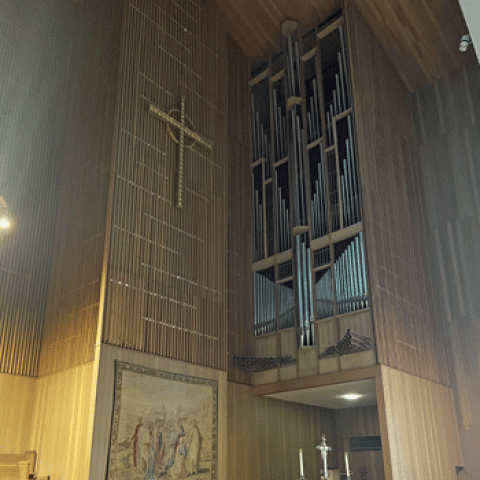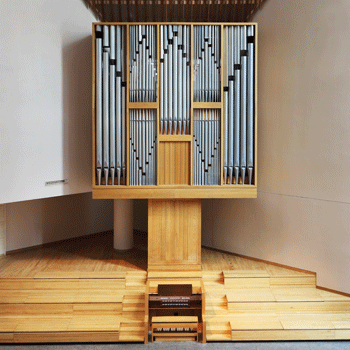
St. Peter’s Lutheran Church, New York, New York, celebrates the inauguration of its restored organ the weekend of November 4–5. The church’s 1977 Klais Orgelbau instrument along with much of the church’s space was damaged when a water main pipe ruptured in January 2021. The organ was removed from the premises and sent to C. B. Fisk, Inc., of Gloucester, Massachusetts.
Fisk restored the case and console of the instrument, designed by architect Massimo Vignelli. A new action was provided along with five additional stops, and a total tonal revoicing has occurred. The renewed instrument is situated in an improved acoustic environment, as well. The new stoplist was devised by the church’s Kantor, Bálint Karosi, and David Pike of Fisk. It was voiced on-site over 12 weeks by Nami Hamada, tonal director, and Michael Kraft, president of Fisk. Historic preservation guidance was provided by Angela Wolf Scott of MacDonald & Mack Architects. Dana Kirkegaard designed acoustical improvements to the room and organ case.
The November 4–5 events include a children’s program; a recital by conservatory students (Amelie Held, Daniel Jacky, Mi Zhou, and Jonghee Yoon); a recital by Nathan Laube; a program of concerti for organ and orchestra featuring Nicole Keller, organist; and Duruflé’s Requiem.
For information: saintpeters.org/news/organ.
Other organ builder news:
Ortloff and Létourneau to renovate 1966 Otto Hoffman organ

